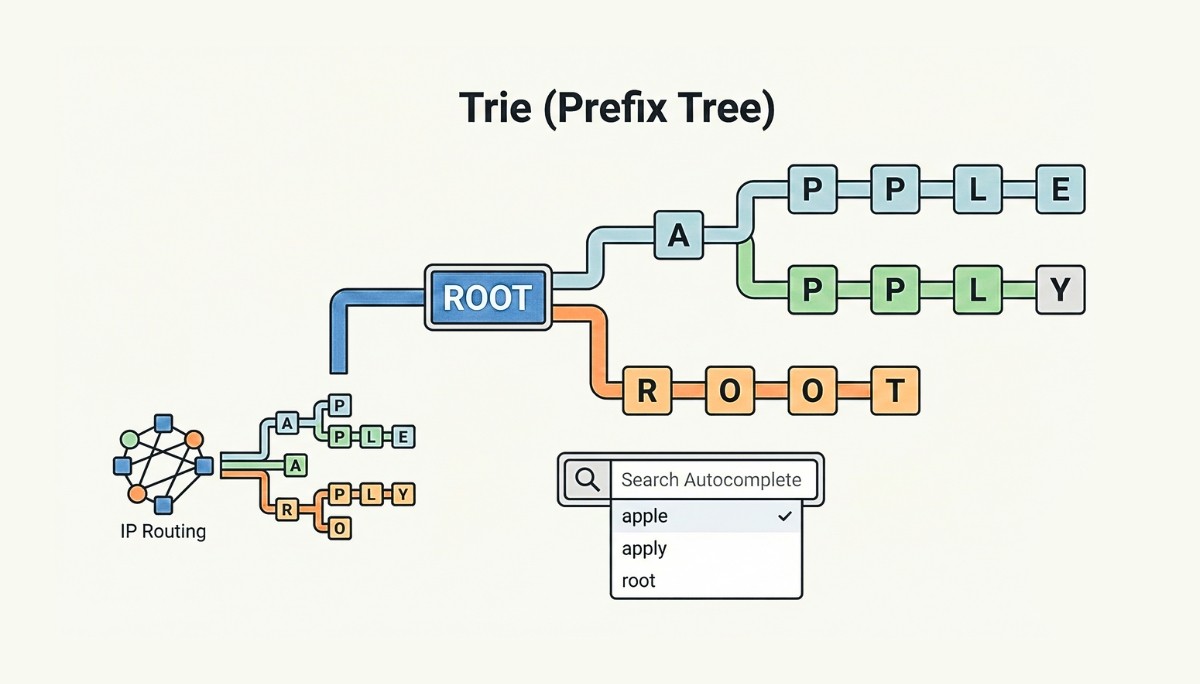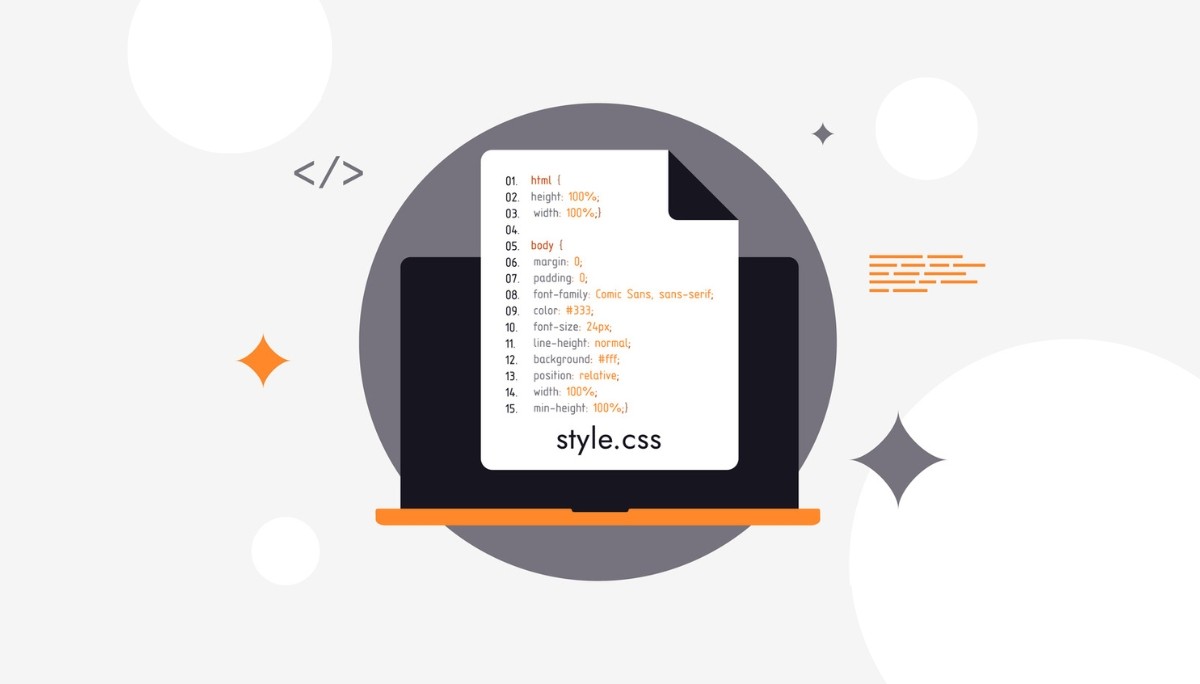Python vs MicroPython: What It Is, Differences, and How to Get Started
By
Ethan Fahey
•
Sep 25, 2025
Python vs. MicroPython: which one makes the most sense for your needs? Python is a powerful, general-purpose language that works across a wide range of applications, while MicroPython is a leaner version designed specifically for microcontrollers and embedded systems. In this article, we’ll break down their differences, highlight common use cases, and show you how to get started with both. For recruiters and AI engineers in the business sector, understanding these distinctions can help match the right talent to the right projects, and tools like Fonzi AI make that process even easier by streamlining candidate evaluation and placement.
Key Takeaways
Python is a general-purpose programming language known for its versatility and extensive libraries, while MicroPython is a lightweight version optimized for microcontrollers and embedded systems.
MicroPython offers a simplified coding experience, making it accessible for beginners and suitable for rapid prototyping in IoT and robotics projects.
Hardware compatibility of MicroPython spans various platforms, including the MicroPython Pyboard and ESP32 boards, enabling developers to leverage its capabilities across a range of devices.
Understanding Python vs MicroPython

At first glance, Python and MicroPython may seem like two sides of the same coin, but they serve distinct purposes. Python is a general-purpose programming language known for its simplicity and readability, making it a favorite among developers for a variety of applications. MicroPython, on the other hand, is a lean and efficient implementation of Python designed to run on microcontrollers and embedded systems with limited resources. It was even funded by the European Space Agency for space applications, highlighting its reliability in critical environments.
The core difference lies in their intended use cases and performance optimization. Python is generally slower but offers a rich set of libraries and features that make it suitable for complex tasks and larger applications. MicroPython, in contrast, is optimized for performance on constrained hardware, making it ideal for IoT devices, robotics, and other embedded systems where resources are limited.
Understanding the distinct functionalities and purposes of these languages offers deeper insights into their respective advantages.
What is Python?
Python, created by Guido van Rossum in the late 1980s, has grown to become one of the most popular programming languages in the world. Its design philosophy emphasizes code readability, and it supports multiple programming paradigms, including structured, object-oriented, and functional programming. Python’s versatility allows it to be used in various fields, from machine learning and data analysis to web development.
One of the key strengths of Python is its extensive standard library, often referred to as the core Python libraries. These libraries provide modules and functions for a wide range of tasks, including the time module, making it easier for developers to write efficient code quickly, as it has been written with usability in mind. Python programs benefit greatly from these resources.
Additionally, the Python compiler can execute .py files seamlessly, allowing developers to run Python code across different platforms and environments. With its robust ecosystem and active community, Python continues to be a go-to programming language for many developers worldwide. The py file format is widely recognized in this context.
What is MicroPython?
MicroPython, introduced by Damien George through a successful crowdfunding campaign, is a streamlined version of Python designed specifically for microcontrollers and embedded systems. Its primary goal is to bring the simplicity and ease of Python programming to the world of microcontrollers. MicroPython includes modules that are optimized for performance on hardware with limited resources, making it an excellent choice for IoT devices, home automation, and robotics. This MicroYython implementation is particularly beneficial for developers looking to leverage Python in constrained environments.
One of the standout features of MicroPython is its portability across different microcontroller platforms. It comes with a built-in REPL (Read-Eval-Print Loop) that allows developers to test and run Python code interactively, providing immediate feedback and simplifying the development process. Despite its compact size, MicroPython is powerful enough to handle a variety of tasks, making it accessible to beginners and experienced developers alike.
However, due to its limited memory space, MicroPython cannot include all the modules available in standard Python. Developers may need to install an external module to extend its functionality, which can be done through Wi-Fi connections using tools like the mip package manager. Despite these limitations, MicroPython’s ability to operate efficiently on minimal hardware makes it an invaluable tool for developing embedded systems and connected devices.
Syntax and Feature Comparisons
Understanding the syntax and feature differences between Python and MicroPython is crucial for developers transitioning between these two environments. Both languages use a similar syntax, making it relatively easy for Python developers to pick up MicroPython. However, there are some key differences to note. For instance, Python uses whitespace to delimit blocks of code, a feature that is also present in MicroPython. However, MicroPython is designed to be more efficient and does not support some of the extra features found in standard Python.
Another important distinction is performance optimization. MicroPython is a lean and efficient implementation tailored for low-resource environments. While it implements a subset of Python 3.4 features, some behaviors and functionalities may differ. These optimizations ensure that MicroPython can run effectively on microcontrollers, but developers need to be mindful of the constraints and differences when writing code.
Core Python Libraries vs MicroPython Modules
One of the significant differences between Python and MicroPython lies in the availability of libraries and modules. Python boasts an extensive collection of core Python libraries that cater to a wide range of applications, from web development to scientific computing. These libraries are designed to run on powerful hardware with ample resources.
MicroPython, on the other hand, is specifically designed for environments with limited resources, such as microcontrollers. As a result, MicroPython includes a subset of these libraries, optimized for performance on constrained hardware. Developers can import modules in MicroPython to add additional functionalities, leveraging the vast pool of existing Python code to accelerate development.
Despite the reduced library set, MicroPython’s efficient garbage collection system ensures smooth operation within the memory constraints of microcontrollers.
Memory Management
Memory management is another area where Python and MicroPython differ significantly. Python uses dynamic memory allocation, allowing for automatic management of memory during program execution. This approach simplifies development and reduces the risk of memory-related issues, such as leaks or access to freed memory.
MicroPython, however, requires more manual memory management due to the limited hardware resources of microcontrollers. Developers need to have a better understanding of the memory constraints of the environment to efficiently utilize available resources. While this adds a layer of complexity, it also ensures that MicroPython can run efficiently on devices with minimal RAM.
Execution Speed and Performance
When it comes to execution speed and performance, MicroPython is optimized for low-resource environments, making it suitable for microcontroller applications. While it is generally faster than many interpreted languages, it cannot match the speed of native code compiled from languages like C. This makes MicroPython ideal for simpler tasks, where its performance is sufficient to meet the application’s requirements.
However, in more complex or resource-heavy applications, performance may degrade. It’s important for developers to consider the limitations of the computer and ensure their software code is optimized to support the specific low-level hardware being used, which is supported by best practices.
Despite these constraints, MicroPython implements a lean and efficient implementation that allows it to perform well in a wide range of embedded systems.
MicroPython Hardware Compatibility

MicroPython’s hardware compatibility is one of its standout features, allowing it to run on a variety of microcontrollers and embedded systems. From affordable microcontrollers to premium advanced boards, MicroPython can be deployed across a broad spectrum of hardware. This versatility makes it an attractive option for developers working on IoT projects, home automation, and other embedded applications.
Microcontrollers, by design, require less powerful processors and memory compared to desktop systems. MicroPython is optimized to maximize the capabilities of these devices, ensuring efficient performance even with limited resources. Whether you’re working with a simple microcontroller or a more advanced board, MicroPython’s compatibility and performance make it a reliable choice for embedded systems development.
Official MicroPython Microcontroller Board
The official MicroPython microcontroller board, known as the MicroPython Pyboard, is based on the STM32 processor architecture. The current version, v1.1, is equipped with a range of features that make it ideal for MicroPython development. With a price point of $40 USD, the Pyboard includes a real-time clock and a micro SD card slot for additional storage, providing developers with the necessary tools to create and test their MicroPython board projects.
The Pyboard’s design and features ensure seamless integration with the MicroPython environment, allowing developers to write and execute MicroPython code efficiently. Its reliability and performance make it a popular choice for those looking to explore the capabilities of MicroPython in their projects.
ESP8266 and ESP32 Boards
ESP8266 and ESP32 boards are among the most popular choices for MicroPython development, thanks to their advanced features and performance. ESP32 boards, in particular, are favored for their dual-core processors, which enhance performance in IoT applications. These boards offer multiple connectivity options and higher processing power, making them suitable for a wide range of projects.
The performance and versatility of ESP32 boards make them a popular choice for developers looking to create efficient and connected devices. Whether you’re working on a simple sensor project or a more complex IoT system, these boards provide the necessary capabilities to bring your ideas to life.
Other Platforms
MicroPython’s versatility extends beyond its official board and the ESP series. It can also run on platforms like the Raspberry Pi, enabling Python programming on a general-purpose Linux desktop environment. This flexibility allows developers to leverage the power of MicroPython on various hardware, making it an excellent tool for a wide range of embedded systems projects.
Another notable platform is the Micro:Bit, a compact board designed to inspire the next generation of coders. Based on the Nordic nRF51822, the Micro:Bit comes with:
built-in Bluetooth LE
temperature sensing
an accelerometer
buttons
an LED grid making it a fantastic educational tool.
Additionally, CircuitPython, a variant of MicroPython, focuses on making coding more accessible for beginners, particularly with Adafruit hardware. MicroPython’s open-source nature and community-driven enhancements further contribute to its adaptability across many devices.
Setting Up MicroPython

Getting started with MicroPython involves setting up the environment on your chosen microcontroller. The process typically includes:
Installing the MicroPython firmware
Writing and executing code
Exploring example projects These steps are crucial for ensuring a smooth development experience and leveraging the full potential of MicroPython.
Following best practices when installing MicroPython firmware can help avoid common pitfalls and ensure your microcontroller is ready for development. Once the firmware is installed, you can begin writing and running MicroPython code, using tools like REPL for interactive programming and immediate feedback.
Engaging in example projects and examples can further solidify your understanding and help you get the most out of MicroPython.
Installing MicroPython Firmware
Installing MicroPython firmware is the first step in setting up your development environment. The firmware can be found on the specific board’s download page, where you’ll typically find stable builds recommended for beginners. Following these guidelines ensures a smoother installation process and minimizes potential issues.
In case of any problems, troubleshooting steps may involve checking serial port connections and ensuring the microcontroller enters the bootloader mode correctly. Adhering to best practices during the installation process can help you avoid common pitfalls and get your MicroPython environment booted and running efficiently.
Writing and Executing Code
Once the firmware is installed, you can begin writing and executing code. In MicroPython, scripts are used instead of sketches, with a focus on creating efficient and lean code for microcontrollers. The REPL (Read-Eval-Print Loop) interface allows for interactive programming, enabling developers to enter commands and receive immediate feedback, which is invaluable during the development process.
Common terminal apps like PuTTY for Windows and Screen for Mac are used to access REPL. Writing and running your first script, such as interacting with an LED as an output pin, can help you get familiar with the control MicroPython environment and its capabilities.
Error messages displayed in case of issues provide insights for debugging and refining your code.
Example Projects
Engaging in example projects is an excellent way to learn and practice MicroPython. Beginner-friendly projects, such as controlling LEDs and reading sensor data, provide a hands-on approach to understanding the basics of MicroPython programming. These projects offer practical experience and help reinforce the concepts learned during the setup and coding process.
By working on these projects, you can gain a deeper understanding of how MicroPython interacts with hardware and how to optimize your code for performance on microcontrollers. These foundational skills will serve as a stepping stone to a more complex course of ambitious projects in the future.
Advantages of Using MicroPython

MicroPython offers several advantages that make it an appealing choice for developers working with microcontrollers and embedded systems. Its accessibility and ease of use allow beginners to program robots and microcontrollers without sacrificing functionality. Engaging in practice projects further solidifies understanding and enhances coding skills through real-world applications.
The rapid feedback provided by the REPL interface enables quick iterations and effective testing, making MicroPython an excellent tool for rapid prototyping. Additionally, the supportive community and shared resources make it easier for developers to find solutions and collaborate on projects. These advantages contribute to MicroPython’s growing popularity and widespread adoption in the developer community.
Accessibility for Beginners
MicroPython is designed to be more readable and easier to learn compared to other programming languages, making it an excellent choice for beginners. Its interactive prompt provides immediate feedback, helping new developers understand the impact of their code and learn through experimentation. This simplified learning curve makes MicroPython accessible to a broader audience, from hobbyists to professionals.
Despite its simplicity, MicroPython is powerful enough for industrial use, bridging the gap between beginner-friendly programming and professional applications. This balance ensures that users can grow their skills and tackle more complex projects as they gain experience, all within the same programming environment.
Rapid Prototyping
MicroPython’s design supports rapid prototyping, allowing developers to quickly iterate and test their hardware projects. The interactive command entry feature provides immediate feedback, enabling developers to refine their code and troubleshoot issues in real-time. This capability is particularly valuable in the fast-paced world of IoT and embedded systems, where quick iterations can significantly speed up the development process.
The serial console print statements in MicroPython allow developers to monitor and debug their projects effectively, ensuring that any issues are identified and resolved promptly. This streamlined development process makes MicroPython an ideal choice for projects where time and efficiency are critical factors.
Community and Support
The MicroPython community is diverse and supportive, offering a wealth of shared resources and collaborative support for developers. Whether you’re a beginner or an experienced developer, the community provides valuable insights, libraries, and modules that can help you overcome challenges and enhance your projects. This collaborative environment fosters innovation and continuous learning, making MicroPython a thriving ecosystem for embedded systems development.
With the backing of a strong community, developers can access a vast pool of knowledge and experience, ensuring that they have the support needed to succeed in their projects. This sense of community and shared learning is one of the key advantages of using MicroPython, making it a popular choice among developers worldwide.
Introducing Fonzi: Revolutionizing AI Talent Hiring

In the competitive world of AI talent hiring, Fonzi stands out as a game-changer. By connecting highly qualified engineers with prominent tech companies, Fonzi offers a streamlined platform that transforms the recruitment process. The platform’s efficiency and effectiveness make it a valuable tool for companies looking to hire top-tier AI engineers.
Fonzi aims to revolutionize the hiring landscape for AI engineers by improving the efficiency of the recruitment process and ensuring that companies find the right talent quickly. With its innovative approach, Fonzi is set to change the way AI talent is hired, providing a win-win solution for both companies and candidates.
Curated Talent Marketplace
Fonzi’s curated talent marketplace is designed to connect companies with top-tier AI engineers who have undergone a rigorous pre-vetting process. The platform’s Match Day event offers:
A unique opportunity for businesses to engage directly with pre-qualified candidates
A streamlined and efficient way for companies to access a pool of highly qualified talent
Assurance that companies find the best fit for their needs
Through its recurring Match Day events, Fonzi ensures that companies can find the right candidates quickly and efficiently. This curated approach to talent hiring not only saves time but also ensures that companies have access to the best AI engineers available, making the hiring process more effective and reliable.
Structured Evaluations
Fonzi’s structured evaluations set it apart from traditional job boards and black-box AI tools. The platform employs advanced algorithms to conduct high-signal evaluations, including fraud detection and bias auditing, to ensure the accuracy and fairness of candidate assessments in the form of a rigorous vetting process that ensures that only the most qualified candidates are presented to companies, enhancing the overall quality of hiring.
By incorporating advanced assessments that include fraud detection and bias auditing, Fonzi ensures that the evaluation process is transparent and reliable. This structured approach provides companies with the confidence that they are hiring the best talent available, free from biases and inaccuracies.
Fast and Scalable Hiring
Fonzi’s hiring process is designed to be quick and efficient, accommodating the needs of both startups and larger enterprises. The platform’s recruitment solutions can reduce the time-to-hire by as much as 40%, making it suitable for a wide range of companies. This efficiency is particularly valuable in the fast-paced tech industry, where finding the right talent quickly can make a significant difference.
Fonzi’s model allows for rapid hiring processes, with most hires happening within three weeks. This fast and scalable approach ensures that companies can meet their hiring needs promptly, whether they are looking to make their first AI hire or their 10,000th.
By preserving and even elevating the candidate experience, Fonzi ensures that the talent hired is engaged and well-matched to the company’s needs.
Summary
In summary, understanding the differences between Python and MicroPython is crucial for developers working with microcontrollers and embedded systems. Python offers a rich ecosystem and extensive libraries for a wide range of applications, while MicroPython provides a lean and efficient implementation optimized for low-resource environments. By exploring their unique features, hardware compatibility, and advantages, developers can make informed decisions about which language to use for their projects.
MicroPython is a great option for both newcomers and seasoned developers thanks to its ease of use, quick prototyping features, and active community support. Getting started with MicroPython can unlock endless opportunities in IoT and embedded systems, giving you practical skills that translate into real-world innovation. For those in the business sector, pairing this knowledge with the hiring insights provided by Fonzi AI ensures you’re not just building smarter projects, you’re also connecting with the right talent to bring them to life.




